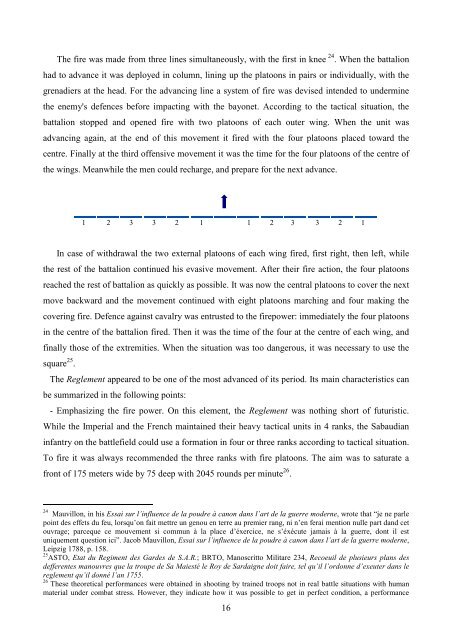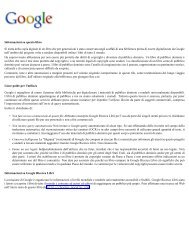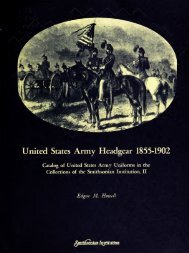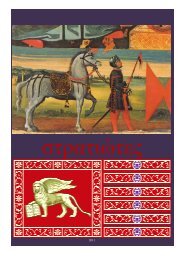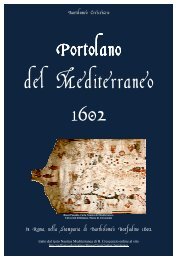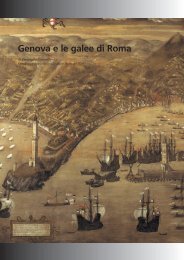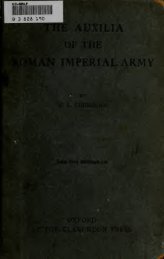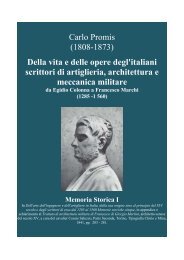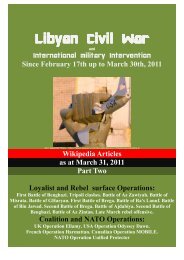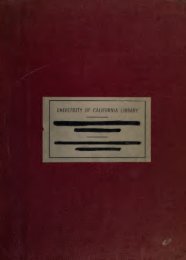Cerino-Badone, Swiss Regiments - Libreria Militare Ares
Cerino-Badone, Swiss Regiments - Libreria Militare Ares
Cerino-Badone, Swiss Regiments - Libreria Militare Ares
- No tags were found...
You also want an ePaper? Increase the reach of your titles
YUMPU automatically turns print PDFs into web optimized ePapers that Google loves.
The fire was made from three lines simultaneously, with the first in knee 24 . When the battalion<br />
had to advance it was deployed in column, lining up the platoons in pairs or individually, with the<br />
grenadiers at the head. For the advancing line a system of fire was devised intended to undermine<br />
the enemy's defences before impacting with the bayonet. According to the tactical situation, the<br />
battalion stopped and opened fire with two platoons of each outer wing. When the unit was<br />
advancing again, at the end of this movement it fired with the four platoons placed toward the<br />
centre. Finally at the third offensive movement it was the time for the four platoons of the centre of<br />
the wings. Meanwhile the men could recharge, and prepare for the next advance.<br />
1 2 3 3 2 1 1 2 3 3 2 1<br />
In case of withdrawal the two external platoons of each wing fired, first right, then left, while<br />
the rest of the battalion continued his evasive movement. After their fire action, the four platoons<br />
reached the rest of battalion as quickly as possible. It was now the central platoons to cover the next<br />
move backward and the movement continued with eight platoons marching and four making the<br />
covering fire. Defence against cavalry was entrusted to the firepower: immediately the four platoons<br />
in the centre of the battalion fired. Then it was the time of the four at the centre of each wing, and<br />
finally those of the extremities. When the situation was too dangerous, it was necessary to use the<br />
square 25 .<br />
The Reglement appeared to be one of the most advanced of its period. Its main characteristics can<br />
be summarized in the following points:<br />
- Emphasizing the fire power. On this element, the Reglement was nothing short of futuristic.<br />
While the Imperial and the French maintained their heavy tactical units in 4 ranks, the Sabaudian<br />
infantry on the battlefield could use a formation in four or three ranks according to tactical situation.<br />
To fire it was always recommended the three ranks with fire platoons. The aim was to saturate a<br />
front of 175 meters wide by 75 deep with 2045 rounds per minute 26 .<br />
24 Mauvillon, in his Essai sur l’influence de la poudre à canon dans l’art de la guerre moderne, wrote that “je ne parle<br />
point des effets du feu, lorsqu’on fait mettre un genou en terre au premier rang, ni n’en ferai mention nulle part dand cet<br />
ouvrage; parceque ce mouvement si commun à la place d’éxercice, ne s’éxécute jamais à la guerre, dont il est<br />
uniquement question ici”. Jacob Mauvillon, Essai sur l’influence de la poudre à canon dans l’art de la guerre moderne,<br />
Leipzig 1788, p. 158.<br />
25 ASTO, Etat du Regiment des Gardes de S.A.R.; BRTO, Manoscritto <strong>Militare</strong> 234, Recoeuil de plusieurs plans des<br />
defferentes manouvres que la troupe de Sa Maiesté le Roy de Sardaigne doit faire, tel qu’il l’ordonne d’exeuter dans le<br />
reglement qu’il donné l’an 1755.<br />
26 These theoretical performances were obtained in shooting by trained troops not in real battle situations with human<br />
material under combat stress. However, they indicate how it was possible to get in perfect condition, a performance<br />
16


